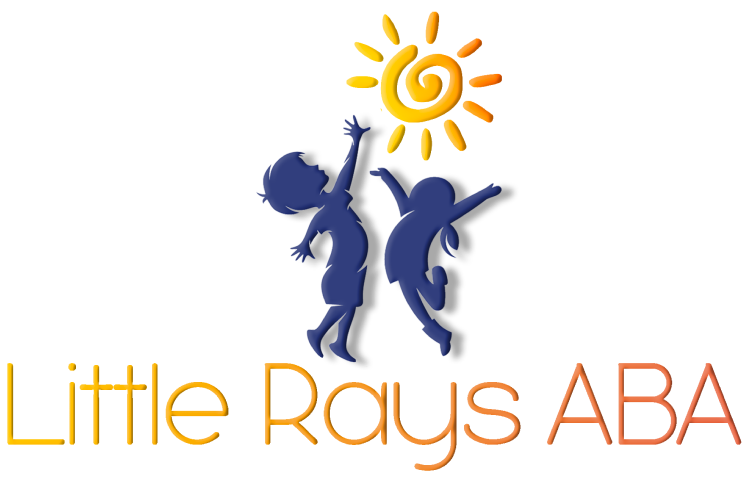Understanding Autism and ADHD
Prevalence and Diagnosis
Autism spectrum disorder (ASD) and attention deficit hyperactivity disorder (ADHD) are two neurodevelopmental disorders that manifest in early childhood. Understanding their prevalence and diagnostic criteria helps illuminate the similarities and differences between these conditions.
According to the Centers for Disease Control and Prevention (CDC), around 1 in 59 children in the United States has received a diagnosis of autism spectrum disorder. Similarly, the American Psychiatric Association (APA) states that ADHD affects approximately 8.4% of children and 2.5% of adults.
| Condition | Prevalence in Children (%) | Prevalence in Adults (%) |
|---|---|---|
| Autism Spectrum Disorder (ASD) | 1.7 | Not specified |
| Attention Deficit Hyperactivity Disorder (ADHD) | 8.4 | 2.5 |
The overlap between autism and ADHD is significant, with an estimated 30 to 80 percent of children with autism also meeting the criteria for ADHD, and 20 to 50 percent of children with ADHD also meeting the criteria for autism. This high degree of co-occurrence complicates the diagnostic process and highlights the need for comprehensive assessments.
For more on the differences between these two conditions, you can visit autism and ADHD differences.
Gender Differences in Diagnosis
Gender disparities in diagnosis are evident in both ASD and ADHD. Boys are significantly more likely to be diagnosed with these conditions compared to girls.
For ADHD, approximately 9.4% of U.S. children between the ages of 2 and 17 have been diagnosed, with boys being much more likely to receive the diagnosis than girls. Specifically, boys are diagnosed with ADHD three times more often than girls.
| Condition | Prevalence in Boys (%) | Prevalence in Girls (%) |
|---|---|---|
| Autism Spectrum Disorder (ASD) | 4.5 times higher than girls | - |
| Attention Deficit Hyperactivity Disorder (ADHD) | 3 times higher than girls | - |
According to Healthline, in the realm of ASD, boys are four-and-a-half times more likely to be diagnosed than girls.
Researchers speculate that these gender differences may be due to diagnostic biases or inherent differences in the presentation of symptoms between males and females. Girls with ADHD, for example, are more likely to exhibit inattentive symptoms rather than hyperactive ones, which can be overlooked in a traditional diagnostic setting. Similarly, girls with autism might show less overt social impairments, making it harder to identify.
For further information on the symptoms and how they manifest differently in genders, you can read autism vs ADHD symptoms.
Understanding the prevalence and the role gender plays in the diagnosis of autism and ADHD helps provide a comprehensive perspective on these conditions. For those keen on delving deeper into the diagnostic challenges and co-occurrences, refer to our article on ADHD and autism spectrum disorder.
Overlapping Symptoms
Autism Spectrum Disorder (ASD) and Attention Deficit Hyperactivity Disorder (ADHD) share many characteristics that can make it challenging to differentiate between them. These overlapping symptoms impact communication, social interactions, and behavior.
Communication and Social Interaction
Communication and social interaction challenges are prevalent in both ASD and ADHD, though the severity and specifics can vary.
- ASD: Children and adults with autism often struggle with social communication and interactions. They may have difficulty understanding social cues, maintaining eye contact, and interpreting body language. Impaired social reciprocity and restricted interests are common in those with ASD. This group has the highest mean levels of impairments in communication and social interaction.
- ADHD: Individuals with ADHD also face social challenges. They can be impulsive, interrupt conversations, or have trouble waiting their turn. Social interactions can be challenging due to hyperactivity and inattentiveness, but these issues are generally less severe than in ASD. Those with ADHD alone have the lowest levels of impairment in these domains.
- Co-Occurrence: For those diagnosed with both ADHD and ASD, daily social interactions become increasingly difficult. They are more likely to experience significant challenges in social communication, peer relationships, and daily functioning.
| Symptom | ASD | ADHD | ASD + ADHD |
|---|---|---|---|
| Eye Contact | Often avoided | Inconsistent | Often avoided |
| Social Cues | Poor understanding | Attention deficits | Significantly poor understanding |
| Interrupting | Rare | Frequent | Frequent |
| Peer Relationships | Often challenging | Sometimes challenging | Often challenging |
Behavioral Challenges
Behavioral challenges such as impulsivity, hyperactivity, and attention difficulties are common in both ASD and ADHD, albeit with different expressions and intensities.
- ASD: Behavioral issues in autism often include repetitive behaviors, strict adherence to routines, and intense focus on specific interests. These behaviors can be rigid and more ritualistic. Sensory sensitivities are also common.
- ADHD: ADHD is characterized by hyperactivity, impulsivity, and inattention. Children and adults with ADHD tend to act without thinking, have difficulty staying on task, and may exhibit restless behavior. These behaviors are generally less structured than those seen in ASD.
- Co-Occurrence: Individuals with both ADHD and ASD experience a compounded effect of behavioral challenges. Impulsivity and hyperactivity in ADHD combined with the repetitive behaviors and sensory issues in ASD lead to more significant daily life difficulties. They also exhibit higher levels of additional psychopathology and poorer adaptive functioning.
| Symptom | ASD | ADHD | ASD + ADHD |
|---|---|---|---|
| Repetitive Behaviors | Common | Rare | Very common |
| Impulsivity | Rare | Common | Very common |
| Attention Difficulty | Contextual | Common | Very common |
| Sensory Sensitivities | Common | Sometimes | Very common |
| Hyperactivity | Rare | Common | Very common |
Both ASD and ADHD have unique and shared features that complicate diagnosis and treatment. Recognizing these overlapping symptoms helps in better understanding the conditions and tailoring interventions effectively.
Diagnostic Challenges
Diagnosing autism and ADHD can be complex due to various overlapping symptoms and shared genetic factors. Here, we'll delve into the challenges related to co-occurrence, comorbidity, and shared genetic risk factors that complicate the diagnosis of these conditions.
Co-Occurrence and Comorbidity
It is not uncommon for individuals to be diagnosed with both autism and ADHD. According to a 2010 study, 83% of autistic children had at least one other developmental disorder, and 10% had at least one psychiatric disorder. The CDC estimates that 14% of children with ADHD also have autism spectrum disorder, with other research suggesting this number could be between 15% and 25%.
| Condition | Percentage with Co-occurring Disorder |
|---|---|
| Autism with Developmental Disorder | 83% |
| Autism with Psychiatric Disorder | 10% |
| ADHD with Autism Spectrum Disorder (CDC) | 14% |
| ADHD with Autism Spectrum Disorder (Other Research) | 15%–25% |
This high rate of co-occurrence (also known as comorbidity) presents a significant diagnostic challenge. Many symptoms, such as difficulty in communication, social interaction, and behavioral challenges, overlap between autism and ADHD, which can make it difficult to distinguish between the two disorders.
Shared Genetic Risk Factors
Studies have identified several genetic similarities between autism and ADHD. Genetic research analyzed large sample sizes, such as 3,962 individuals with autism, 3,477 with ADHD, 901 with both conditions, and 5,002 controls, revealing a shared overlap in harmful mutations. These findings suggest that both conditions may share some common genetic roots.
| Group | Harmful Truncating Mutations |
|---|---|
| Autism | Present |
| ADHD | Present |
| Both Autism and ADHD | Higher Prevalence |
| Controls | Lower Prevalence |
Genetic studies indicate that relatives of individuals with either condition have an increased risk of both disorders, reinforcing the theory of shared genetic risk factors. This shared genetic predisposition complicates diagnosis but also offers opportunities for early detection and intervention.
Behavioral therapy and medication can help manage symptoms of both conditions. Some medications prescribed for ADHD might also alleviate symptoms of autism in individuals diagnosed with both conditions. More on treatment options can be found in our section on behavioral therapy and physical fitness.
By understanding the diagnostic challenges and the underlying genetic links, individuals with autism and ADHD, as well as their families, can navigate their conditions more effectively and aim for better outcomes.
Unique Characteristics
Understanding the unique characteristics of autism and ADHD helps to clarify the similarities and differences between these two disorders.
Brain Structure and Connectivity
Imaging studies have revealed important distinctions in brain structure and connectivity for individuals with autism, ADHD, or both.
| Brain Structure | Autism | ADHD | Both |
|---|---|---|---|
| Amygdala Size | Larger | Normal | Mixed |
| Total Brain Volume | Larger | Smaller | Mixed |
| Brain Maturation | Delayed/Varied | Delayed | Delayed/Varied |
According to The Transmitter, individuals with autism typically possess a larger amygdala and an increased overall brain volume compared to those without the disorder. In contrast, individuals with ADHD often exhibit a smaller total brain volume. Brain maturation can also proceed differently for those with either condition, showing developmental delays or varied progress compared to typically developing individuals.
Understanding these brain structure and connectivity differences is crucial for accurately diagnosing and developing treatment approaches for those with either or both conditions.
Gender Differences in Symptoms
Gender differences play a significant role in the presentation of symptoms in individuals with autism and ADHD.
| Symptom Category | Autism in Boys | Autism in Girls | ADHD in Boys | ADHD in Girls |
|---|---|---|---|---|
| Social Skills | More Severe | Often Overlooked | Impulsivity | Inattention |
| Behavioral Signs | Early Manifestation | Often Subtle | Overt | Subtle |
| Diagnosis | Earlier | Later | Earlier | Later |
Boys with autism often display more overt social skill deficits and behavioral challenges at an earlier age, as stated by ADDitude Magazine. In contrast, girls may present symptoms more subtly, leading to later and sometimes overlooked diagnoses.
Similar patterns are observed in ADHD, where boys generally show more impulsive behaviors, and girls exhibit inattention which might be less noticeable. As a result, girls may also receive a later diagnosis.
These gender differences underscore the need for tailored diagnostic approaches to ensure accurate identification and appropriate intervention for both boys and girls.
Understanding the unique characteristics of brain structure, connectivity, and gender differences in symptoms enhances our comprehension of the complexities of autism and ADHD. This knowledge informs better diagnostic strategies and individualized treatment plans, ensuring optimal care for those affected by these conditions.
Treatment Approaches
Effective management of Autism Spectrum Disorder (ASD) and Attention-Deficit/Hyperactivity Disorder (ADHD) often involves a combination of medication, psychosocial interventions, behavioral therapy, and physical fitness. The overlapping symptoms of these conditions necessitate a comprehensive approach that addresses the unique challenges faced by individuals with co-occurring ASD and ADHD.
Medication and Psychosocial Interventions
Medication is a common component of treatment for both ADHD and ASD. Stimulant medications, such as methylphenidate and amphetamine-based treatments, are frequently prescribed for ADHD and may also help alleviate certain symptoms of ASD in individuals with both disorders. Non-stimulant medications like atomoxetine and guanfacine can also be beneficial.
| Medication Type | ADHD | ASD | ASD + ADHD |
|---|---|---|---|
| Stimulants (e.g., Methylphenidate) | Commonly Used | Occasionally Used | Often Effective |
| Non-Stimulants (e.g., Atomoxetine) | Frequently Used | Sometimes Used | Potential Benefit |
| Antipsychotics (e.g., Risperidone) | Rarely Used | Commonly Used | Often Used |
In addition to medication, psychosocial interventions play a critical role in managing both conditions. These interventions may include:
- Social skills training to enhance communication and interaction abilities.
- Cognitive-behavioral therapy (CBT) to address challenges related to impulsivity, attention, and emotional regulation.
- Parent training programs to equip caregivers with strategies for supporting their children's development and managing behaviors.
Behavioral Therapy and Physical Fitness
Behavioral therapy is highly effective in managing symptoms of both ADHD and ASD. Applied Behavior Analysis (ABA) is particularly useful for individuals with ASD, focusing on improving specific behaviors and skills through positive reinforcement and structured interventions. For those with ADHD, behavioral therapy targets reducing disruptive behaviors and enhancing attention and organizational skills.
| Therapy Type | ADHD | ASD | ASD + ADHD |
|---|---|---|---|
| Applied Behavior Analysis (ABA) | Sometimes Used | Commonly Used | Often Effective |
| Cognitive-Behavioral Therapy (CBT) | Frequently Used | Occasionally Used | Often Effective |
| Social Skills Training | Occasionally Used | Frequently Used | Very Effective |
Physical fitness and regular exercise are essential for individuals with both conditions. Engaging in physical activity can provide numerous benefits, such as:
- Improving concentration and reducing hyperactivity.
- Enhancing mood and reducing anxiety levels.
- Promoting overall physical health and well-being.
Integrating these treatment approaches can significantly improve the quality of life for individuals with co-occurring ASD and ADHD. By addressing the unique needs of each individual, healthcare professionals can develop personalized treatment plans that mitigate symptoms and support optimal functioning in daily life.
Future Research and Implications
Genetic Studies and Risk Genes
Recent studies have shown a significant overlap in the genetic risk factors associated with both autism and ADHD. One study analyzed genetic data from 3,962 individuals diagnosed with autism, 3,477 with ADHD, 901 with both conditions, and 5,002 control subjects. The study discovered a shared overlap in harmful truncating mutations in those with autism and ADHD.
Another study found that individuals with autism, ADHD, or both conditions have a higher prevalence of truncating mutations compared to controls. These mutations result in incomplete or malfunctioning proteins and occur in the same genes for both autism and ADHD.
The New Jersey Language and Autism Genetics Study (NJLAGS) identified regions on chromosomes 12 and 17 that are significantly associated with ADHD. These regions offer potential risk genes for both ASD and ADHD. Findings such as these emphasize the importance of genetic studies in understanding the overlap and differences between autism and ADHD. Advances in genetic research could lead to improved diagnostic tools and targeted therapies for individuals with these conditions.
Treatment Responses and Challenges
Managing symptoms of both autism and ADHD presents unique challenges. Behavioral therapy has proven beneficial in managing symptoms of both conditions. Some medications used to treat ADHD might also help alleviate symptoms of autism in individuals diagnosed with both conditions.
However, individuals with both autism and ADHD tend to experience more difficulties in daily situations compared to those with only one of the disorders. These difficulties include higher levels of additional psychopathology, lower quality of life, and poorer adaptive functioning. This highlights the need for tailored treatment approaches and the importance of ongoing research to better understand treatment responses in individuals with comorbid conditions.
| Treatment Method | Benefits | Challenges |
|---|---|---|
| Behavioral Therapy | Effective in managing symptoms | Requires individualized approaches |
| Medication | May help with both ADHD and ASD symptoms | Potential side effects, variable effectiveness |
| Daily Management | Improved quality of life | Higher levels of additional psychopathology |
Exploring the genetic overlaps and treatment responses between autism and ADHD can lead to better understanding and management of these conditions.
Final Thoughts
Understanding the similarities and differences between autism and ADHD is crucial for accurate diagnosis and effective intervention. While both conditions share overlapping traits, recognizing their unique characteristics allows for tailored support strategies.
If you’re looking for expert guidance in managing autism or ADHD, Little Rays ABA is here to help. Contact us today to learn more about our personalized ABA therapy services!
Sources:
- https://www.cdc.gov/autism/data-research/index.html
- https://www.healthline.com/health/adhd/autism-and-adhd
- https://www.ncbi.nlm.nih.gov/pmc/articles/PMC4709846/
- https://www.ncbi.nlm.nih.gov/pmc/articles/PMC3441928/
- https://pmc.ncbi.nlm.nih.gov/articles/PMC8111170/
- https://www.thetransmitter.org/spectrum/decoding-overlap-autism-adhd/
- https://www.additudemag.com/autism-and-adhd/?srsltid=AfmBOorlEka3-f7lUJ0UDhdrjVu1ZZ423kVER4Val3FYThz0epUI4XBU
- https://www.healthline.com/health/adhd/autism-and-adhd
Unlock Your Child's Potential with Expert ABA Therapy!
At Little Rays ABA, we provide compassionate, evidence-based ABA therapy to help children with autism thrive. Our personalized approach fosters growth in communication, social skills, and independence.
Get In Touch With Us Today to Get Started With ABA Therapy!
Related Posts
MENU
GET IN TOUCH
7117 San Salvador Dr Boca Raton, FL 33433
3200 Collins Ave Miami Beach, FL 33140





